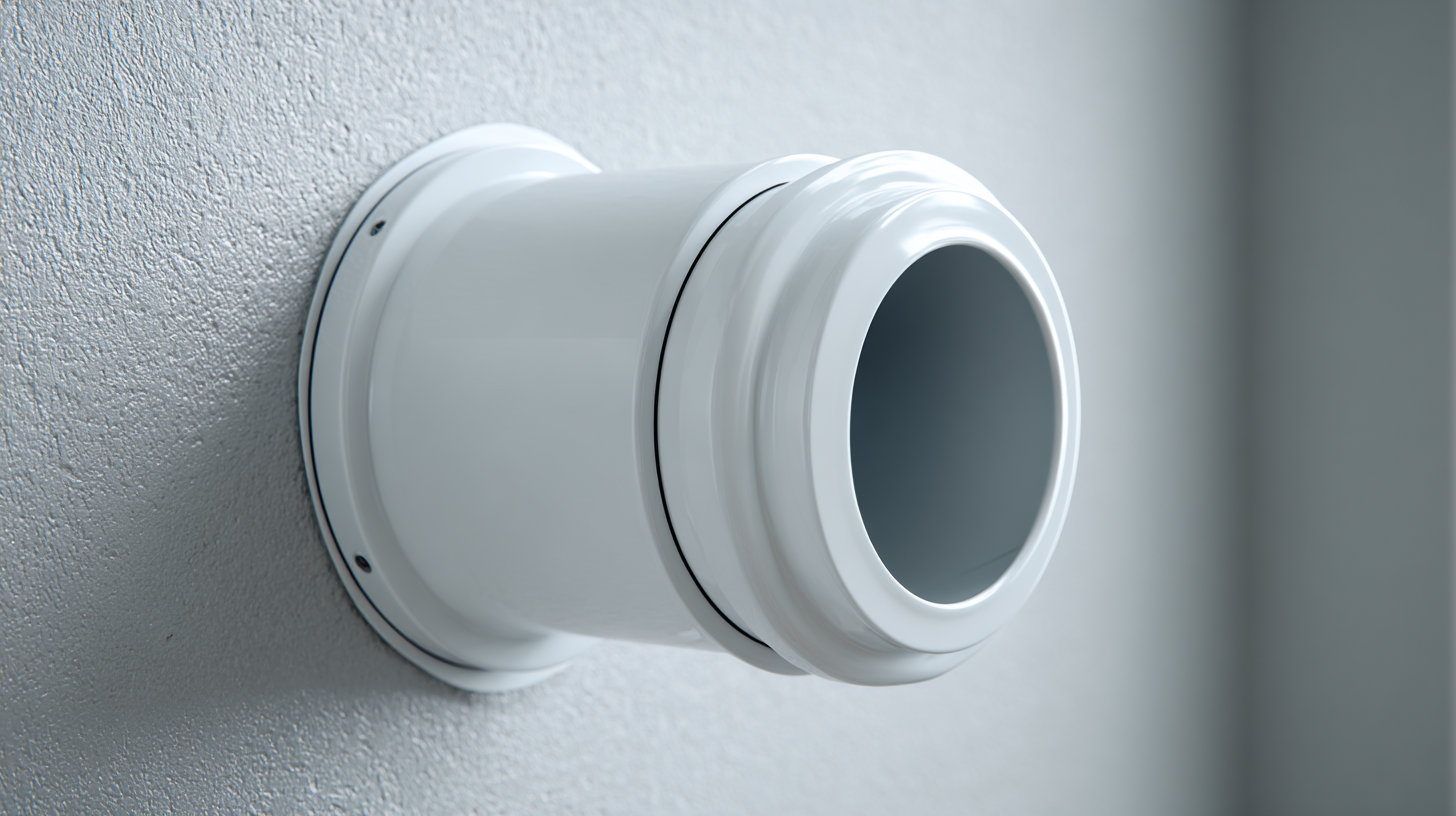When installing a dryer vent, selecting the appropriate elbow for dryer vent configuration is crucial for optimal performance and safety. According to the U.S. Fire Administration, failures in dryer exhaust systems account for thousands of home structure fires each year, emphasizing the importance of quality materials and proper installation techniques.
Research indicates that using the right elbow – whether it’s a standard 90-degree bend or a smooth transition elbow – can significantly reduce airflow restrictions, preventing lint buildup that contributes to fire hazards and improving dryer efficiency by up to 30%. In this light, understanding the specifications and benefits of various elbows for dryer vents becomes essential for homeowners and contractors alike.

This article delves into why making the right choice in elbow for dryer vent installation is not just a matter of convenience, but a critical step in ensuring safety and efficiency in your laundry room.
When it comes to dryer vent installation, selecting the right elbow is crucial for ensuring efficient airflow and preventing potential hazards. The importance of proper elbow selection cannot be overstated, as it directly affects the dryer’s performance and safety. According to the U.S. Fire Administration, more than 15,000 fires are reported annually as a result of clothes dryers, many of which are linked to lint buildup in vent systems. An improperly designed elbow can lead to increased airflow resistance, trapping lint and moisture, which exacerbates the risk of clogs and ultimately, fires.
Moreover, the National Fire Protection Association (NFPA) highlights that cleaning dryer vents can reduce the risk of major dryer fires by improving ventilation and efficiency. Horizontal elbows, in particular, can severely hinder airflow if not chosen with regard to the system's layout. Selecting the appropriate elbow size and angle can enhance the performance of your dryer and extend its lifespan. It is essential for homeowners to understand that investing in quality materials and appropriate elbow configurations not only supports efficient drying cycles but is also a proactive step towards fire safety.

When it comes to dryer vent installation, selecting the right elbow is crucial for both efficiency and safety. Elbows are typically made from materials like galvanized steel, aluminum, and PVC, each of which has its unique benefits. Galvanized steel elbows are favored for their durability and ability to withstand high temperatures, making them ideal for metal venting systems. According to the Ventilation Manufacturers Association, using quality materials can reduce fire risks significantly, since inferior materials can degrade or even ignite under prolonged heat exposure.
On the other hand, aluminum elbows are lightweight and resistant to corrosion, making them a popular choice for flexible vent systems. However, PVC is often overlooked; while it offers excellent insulation properties and is resistant to degradation, it is less common due to its lower temperature tolerance compared to metal alternatives. A study by the National Fire Protection Association highlights that improper installation and use of subpar materials can lead to increased risks, indicating that proper elbow selection can contribute to 25% fewer fire-related incidents. Thus, understanding the materials and designs of elbows can lead to better ventilation choices and safer homes.
The angle of the elbow used in dryer vent installations significantly influences airflow and, consequently, dryer performance. Research from the U.S. Department of Energy indicates that for every 45-degree bend in a vent, airflow can be reduced by up to 20%. This drop in efficiency can lead to longer drying times and increased energy consumption, which not only affects your utility bills but also places additional strain on the dryer, potentially shortening its lifespan.
Moreover, the selection of the right elbow is essential in maintaining optimal airflow. A sharp 90-degree elbow can create turbulence and resistance, further hindering airflow. According to the International Association of Certified Home Inspectors, improper venting can also lead to increased lint accumulation, posing a fire hazard. By opting for a smoother, longer-radius elbow, homeowners can ensure more efficient ventilation, reducing energy costs by up to 30% while significantly improving dryer performance and safety.
When installing a dryer vent, many homeowners overlook the importance of selecting the right elbow. Common mistakes in dryer vent elbow installation can lead to serious consequences. One frequent error is using sharp-angled elbows, which can restrict airflow and trap lint. This not only reduces the efficiency of the dryer but also significantly increases the risk of lint buildup, a major fire hazard. It’s essential to opt for long, sweeping elbows to promote better airflow and minimize lint accumulation.
Another mistake is the improper sealing of elbows. Failing to securely connect the elbow joints can create leaks that allow hot, moist air to escape into the home, leading to increased humidity and mold growth. Furthermore, using duct tape as a sealant is often a temporary fix that fails over time. Instead, professionals recommend using metal clamps or screws for a long-lasting, secure installation. By paying attention to these common pitfalls, homeowners can ensure their dryer vent system operates safely and efficiently.
When it comes to dryer vent installation, selecting the right elbow is essential not only for performance but also for maintenance. The elbow components in dryer vent systems are crucial in directing airflow and minimizing lint buildup. However, improper maintenance can lead to clogs, which pose significant fire hazards.

To keep your elbow components functioning optimally, regular inspections are vital. Check for any signs of lint accumulation around the elbows, as this can restrict airflow and cause overheating. Additionally, consider using a dryer vent cleaning kit, which includes tools like long-handled bristle brushes designed to reach deep into your vent system. These cleaning kits simplify the process of removing lint, helping to mitigate fire risks and ensuring efficient dryer operation.
Another important tip is to ensure that the elbows are installed at the correct angles. Sharp bends can trap lint more easily and obstruct airflow. By following best practices and maintaining your dryer vent system, you can enhance the lifespan of your appliance and ensure a safer home environment.





